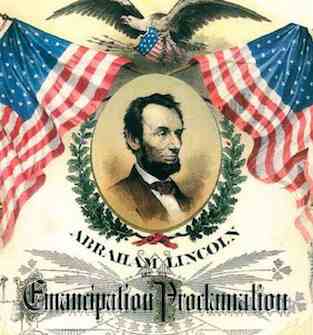 New Year’s Day: Ring the Bells.
New Year’s Day: Ring the Bells.
At 2:00 p.m. churches, colleges/universities, and other organizations will ring their bells to mark the moment 150 years ago when Abraham Lincoln signed the Emancipation Proclamation.
President Lincoln issued the Emancipation Proclamation on January 1, 1863, as the nation approached its third year of bloody civil war. The proclamation declared “that all persons held as slaves” within the rebellious states “are, and henceforward shall be free.”
Historians say Lincoln’s hands shook so violently that at first he could not sign the document. Afterward, he told a friend, “I never, in my life, felt more certain that I was doing right than I do signing this paper.”
The National Archives is celebrating the 150th Anniversary of the Emancipation Proclamation with a rare display of the original document from December 30 through January 1, at the National Archives Building in Washington, DC and during special programs throughout the year. Normally, the document is kept in storage to limit light exposure and thus preserve the pages. (See the viewing schedule at the archives.org)
(READ more about the history and planned celebrations from Reuters, or WATCH video from US Archives)



















